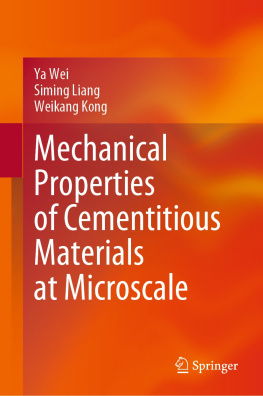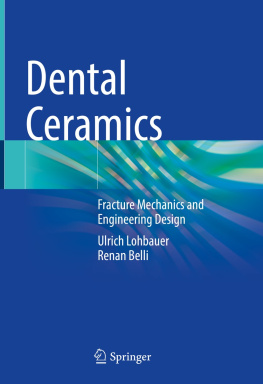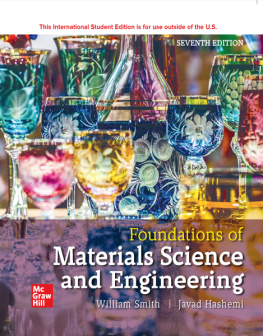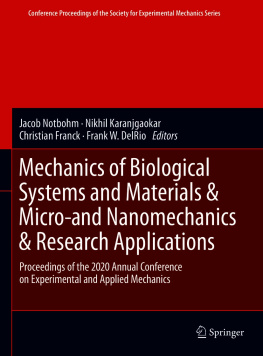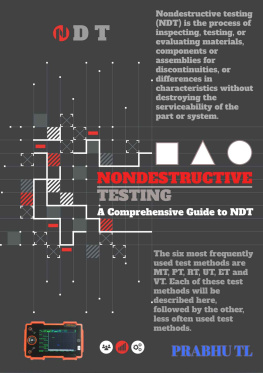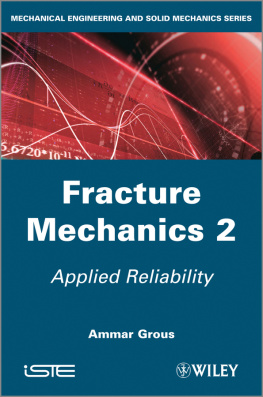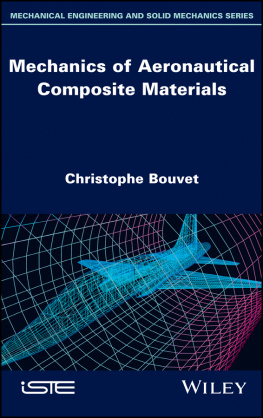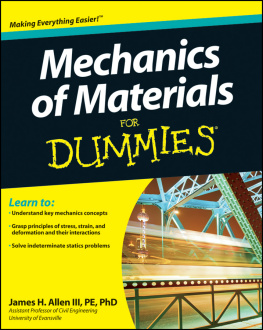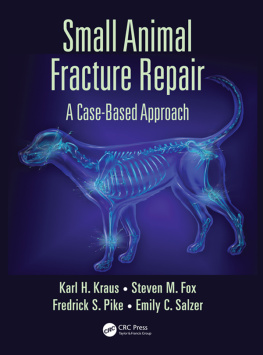
Table of Contents
List of Tables
- Chapter 05
- Chapter 06
- Chapter 07
- Chapter 08
- Chapter 09
List of Illustrations
- Chapter 01
- Chapter 02
- Chapter 03
- Chapter 04
- Chapter 05
- Chapter 06
- Chapter 07
- Chapter 08
- Chapter 09
- Chapter 10
Guide
Pages
The Fracture of Brittle Materials
Testing and Analysis
Second Edition
Stephen W. Freiman
John J. Mecholsky, Jr.
Copyright 2019 by The American Ceramic Society. All rights reserved.
Published by John Wiley & Sons, Inc., Hoboken, New Jersey.
Published simultaneously in Canada.
Edition History
John Wiley & Sons, Inc. (1e, 2012)
All rights reserved. No part of this publication may be reproduced, stored in a retrieval system, or transmitted, in any form or by any means, electronic, mechanical, photocopying, recording or otherwise, except as permitted by law. Advice on how to obtain permission to reuse material from this title is available at http://www.wiley.com/go/permissions.
The right of Stephen W. Freiman and John J. Mecholsky, Jr. to be identified as the authors of this work has been asserted in accordance with law.
Registered Office
John Wiley & Sons, Inc., 111 River Street, Hoboken, NJ 07030, USA
Editorial Office
111 River Street, Hoboken, NJ 07030, USA
For details of our global editorial offices, customer services, and more information about Wiley products visit us at www.wiley.com.
Wiley also publishes its books in a variety of electronic formats and by printondemand. Some content that appears in standard print versions of this book may not be available in other formats.
Limit of Liability/Disclaimer of Warranty
In view of ongoing research, equipment modifications, changes in governmental regulations, and the constant flow of information relating to the use of experimental reagents, equipment, and devices, the reader is urged to review and evaluate the information provided in the package insert or instructions for each chemical, piece of equipment, reagent, or device for, among other things, any changes in the instructions or indication of usage and for added warnings and precautions. While the publisher and authors have used their best efforts in preparing this work, they make no representations or warranties with respect to the accuracy or completeness of the contents of this work and specifically disclaim all warranties, including without limitation any implied warranties of merchantability or fitness for a particular purpose. No warranty may be created or extended by sales representatives, written sales materials or promotional statements for this work. The fact that an organization, website, or product is referred to in this work as a citation and/or potential source of further information does not mean that the publisher and authors endorse the information or services the organization, website, or product may provide or recommendations it may make. This work is sold with the understanding that the publisher is not engaged in rendering professional services. The advice and strategies contained herein may not be suitable for your situation. You should consult with a specialist where appropriate. Further, readers should be aware that websites listed in this work may have changed or disappeared between when this work was written and when it is read. Neither the publisher nor authors shall be liable for any loss of profit or any other commercial damages, including but not limited to special, incidental, consequential, or other damages.
Library of Congress CataloginginPublication Data
Names: Freiman, S. W., author. | Mecholsky, John J., Jr., author.
Title: The fracture of brittle materials : testing and analysis / Stephen W. Freiman and John J. Mecholsky, Jr.
Description: Second edition. | Hoboken, New Jersey : John Wiley & Sons, Inc., [2018] | Includes bibliographical references and index. |
Identifiers: LCCN 2018036245 (print) | LCCN 2018036557 (ebook) | ISBN 9781118769669 (Adobe PDF) | ISBN 9781118769775 (ePub) | ISBN 9781118769706 (hardcover)
Subjects: LCSH: Fracture mechanics. | Brittleness.
Classification: LCC TA409 (ebook) | LCC TA409 .F765 2018 (print) | DDC 620.1/126dc23
LC record available at https://lccn.loc.gov/2018036245
Cover design by Wiley
Cover image: Courtesy of Gina and Jason Blume
We want to thank Jason and Gina Blume for the picture of the natural fracture origin on the cover of this book.
We want to dedicate this book to all the people who inspired us, guided us, and collaborated with us over the years. We especially want to acknowledge the influence of Roy Rice, George. D Quinn, and Shelly Wiederhorn in formulating many of our ideas. In many cases, they provided the necessary catalyst to further our knowledge through discussions and collaborative research.
Preface
The purpose of this book is to bring together the background, testing procedures, and analysis methods needed to design and use materials that fail in a brittle manner, primarily ceramics. In this context we define ceramics quite broadly as any inorganic nonmetal. Such a definition includes diverse materials such as semiconductors (e.g. Si, GaAs, InP), other single crystals (ZnSe, CaF, etc.), cements and concrete, and of course the oxides, carbides, nitrides, and others that we normally think of as ceramics. Ceramics are also used in composite form, either by dispersing one phase in another or by crystallizing phases from a glassy matrix. Most test procedures designed for monolithic bodies can be used here as well. However, continuous fiberreinforced composites behave quite differently and will not be discussed herein. Ceramics are also increasingly used in films and coatings, but determining the mechanical properties of materials in these forms is more complex and will not be addressed in this book.
This book addresses testing and analysis at temperatures for which the material behaves in a brittle manner. At elevated temperatures other modes of failure often are important. These include creep as well as general plastic deformation. Both of these topics are outside the scope of this book.
In this book we provide the reader some of the background needed to understand the brittle fracture process as well as a basis for choosing the proper test procedures. The mathematical development of the expressions used to calculate the various properties will be kept to a minimum; the reader will be referred to fundamental references. We intend to provide examples to allow the reader unfamiliar with the tests to be able to perform the test procedures properly. However, the reader is strongly encouraged to consult formal national and international standards for more extensive test procedures. Questions to test comprehension for selfevaluation are given at the conclusion of each chapter.
summarizes the critical issues with respect to brittle fracture.
STEPHEN W. FREIMAN
JOHN J. MECHOLSKY, JR.
Acknowledgements
We gratefully acknowledge the work of Nicholas Mecholsky in preparing many of the illustrations in this volume. We also appreciate the numerous technical discussions with George Quinn and Jeffrey Fong. Finally, we would like to express our gratitude to Roy Rice for introducing us to many of the topics discussed in this book, particularly those focused on the effects of microstructure.
Next page

